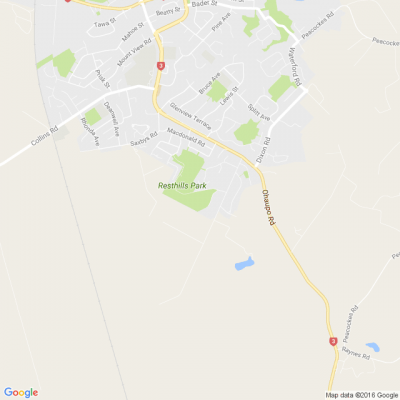
Know what’s happening
Access the private noticeboard for verified neighbours near you. Keep informed about any suspicious activity, send urgent updates to your neighbours when required and discuss emergency planning.
Get to know your neighbours
Browse the directory and start getting to know your neighbours. Don’t want to post to the whole neighbourhood? Send a private message.
Buy, sell and give away
Want to declutter your garage? Buy some used household items? Give away some garden stuff? Become a verified neighbour to browse and post items for sale. Trading is simple when everyone lives nearby.


Win a brand new home!
For just $15, you could win a fully furnished home in Clarks Beach, Auckland worth over $1 million. Buy your tickets today!

Thank you for using Neighbourly
You may receive an email confirmation for any offer you selected. The associated companies will contact you directly to activate your requests.
Make the most of your retirement with less stress, and a whole lot of fun with SBS Unwind, a Reverse Equity Mortgage loan. The idea is simple – homeowners aged over 60 stay in their house but free up some money from the property to live their life.
Use the money however you like, while the … View moreMake the most of your retirement with less stress, and a whole lot of fun with SBS Unwind, a Reverse Equity Mortgage loan. The idea is simple – homeowners aged over 60 stay in their house but free up some money from the property to live their life.
Use the money however you like, while the flexible loan means regular payments aren’t required and you can repay all or some of the loan at any time.
For more details visit our website, contact your local SBS branch or call 0800 727 2265.
Eligibility Criteria, Terms and Conditions, and fees apply.
Find out more

Robert Anderson from Curtain Clean Hamilton
The answer: Not Directly.
Only if the curtains are actually touching or touch the window, which most don’t. It derives from and does contribute to the general humidity in the surrounds around the curtain which again contributes to the development of mould. Water on windows is mostly somewhere … View moreThe answer: Not Directly.
Only if the curtains are actually touching or touch the window, which most don’t. It derives from and does contribute to the general humidity in the surrounds around the curtain which again contributes to the development of mould. Water on windows is mostly somewhere between 75 and 100 mm from a curtain so how it hops the space to create mould is an interesting question.
I have seen curtains more than a meter from the windows and still moldy and curtains 20 years old with no mould. Not in the sun.
Moisture on windows is caused by the lower dew point of the glass. The warmer the air in a room/house the more moisture it will hold. It is a natural reaction for the moisture in the air to collect on the cool glass as the warm moist air attempts to equalize the air temperature and the glass temperature. The cooler glass sucks the heat out of the air.
Heat always travels from hot towards cold, leaving the moisture on the window and the warmth heating the glass until the outside temperature is the same as the inside temperature.
The closer together the temperature of the air and the glass the less it will happen. Indeed in the summer it works in the opposite where the higher temp of the glass heats the air in the room. This would also occur on days in the winter when the air in the house is cooler than the glass that’s heated by the sun. As soon as the temperature reverses the dew point on the glass lowers and then we have moisture on the windows. Same happens in your car.
Now without the sun or heating of some kind warming the curtains and the room, the curtains would remain at the ambient room air temperature but that’s not what happens. Heating or the sun will warm the curtains which like the air absorb the moisture from the air around them. This is also influenced by the humidity in the air at the time. If the curtains are cooler than the air in the room then any humidity will be absorbed by the curtains.
In doing so they also absorb the bacteria that is entrapped in that moisture. It important to note that that moisture can be from any source both inside and outside of the immediate vicinity of the curtains, for moisture in the air is carried by air currents that swirl around constantly, due to breeze, air temperature, movement by people and so on.
The curtains will adjust their own temperature and level of water absorbed up and down depending on the same factors, i.e. air temp, amount of heat applied to them by the sun and the amount of heat the material is able to absorb and retain and the all this is complicated by the time which curtains retain that heat and for how long.
So we have material curtains that absorb and release both heat and moisture all the time depending on the room conditions.
Thus we have curtains that essentially become mini glass houses or incubators, especially in the folds or where the sun has a high heat impact upon the material. A further compounding factor is the closeness of the material bulk to the wall. If as is mostly the case curtains are bunched against the wall, especially after being heated by the sun in the mornings, then the incubator effect is heightened. The same applies to late afternoon except that at that time the sun is intense and hotter than morning so the curtains retain more heat for longer. Midday sun is at a higher angle and so doesn’t affect the curtains so much.
The type of material also has an effect. Many older materials were natural and tended to allow more passage of air. Many of the modern materials are almost impervious to air and in the case of say taffeta’s and blackout material there is no “breathing” at all.
The use of Blackout material on many curtains has both the effect of no “breathing and it also retains an enormous amount of heat where the sun shines upon it. Put taffeta and blackout together and it’s a given that curtains and or more likely the linings will go moldy, even in rooms where there is standard ventilation.
How does the warmth affect the curtains?
As with all incubators and glass houses the warmth creates an ideal condition for bacteria to grow. Longer periods of warmth, especially where the humidity is high, such as in curtain folds, and even in the material fibres themselves encourage the growth of bacteria. Bacteria thrive in colonies and have an enormous rate of duplication, and will grow colonies that live and hibernate and create their spores that continue to reinfect and grow the new colonies.
This growth happens in the warm, mostly summer and on curtains is mostly seen as an orange-y or reddish spots. These colonies flourish and die and then regrow from the spores left in the curtains. This may happen for several years before they become easily seen.
By the time most people notice the mildew the bacteria have died, due to the cooler winter temperature and left their spores which have turned black. That’s what we see. They are hibernating mould bacteria which are responsible for the black stain seen on curtains and linings.
It would be rare for this to contaminate the curtains in a short period of time to a degree where it is very visible and usually we could expect two to three years for this to be readily visible and often longer. The black often becomes visible after winter when the cold has had its effect on the bacteria.
Where does all this moisture come from?
The air always contains moisture to a greater or lesser extent. In New Zealand, area’s such as Auckland, Bay of Plenty, Waikato and others have high levels of humidity on any given day because we are close to the sea.
Inside of a house as well as the air humidity level there are other sources of humidity.
People. People exhale moisture when breathing. Closing bedroom doors at night means that that moisture remains inside the bedroom unless there is ventilation to change the air.
En-suites which are now very popular contribute to the moisture in a house, are as do showers and cooking, especially boiling pots of water.
Un-flued Gas Heaters run on LPG are big contributors to the humidity in the room because the gas burns to produce CO2 and water aka Moisture.
Now we want to have these facilities as well as warm houses so we have created an ideal world for bacteria.
Some of the issues can be easily mitigated.
Heat pumps do not remove moisture from a house except at low temperatures whereas dehumidifiers remove the moisture from the air in the house and produce warmth in the process. Tiny ones are not much good but there are a number of larger models.(Remember your science and you will recall that the warmer the air the more moisture it holds, so warming it with a heat pump allows the air to hold more moisture from your cooking, showers etc. Dehumidifiers work by extracting that water, something the heat pump can’t/won’t do.). Using a dehumidifier means not having to install a ventilation system at more cost. Allowing for better room ventilation with cool air. Especially of the windows can be left just open to facilitate cool air inflow.
By changing the curtain rail brackets from the standard 65mm to 80 or 100mm so that the curtains are further from the walls and the windows. This allows for more air circulation around the curtains and thus less higher temperatures. Having separate blackout curtains on a different rail to the other curtains. Install a ShowerDome. In our experience roof ventilation systems and double glazing do not prevent this mildew problem but may delay its onset.
Too late? We can clean your mouldy curtains - visit curtainclean.co.nz or call us on 07-579 0501 to book in today.
Gina from Glenview
Truck of Top Soil free, ready to deliver if need be just want it gone today if possible 👍🏽

Trupti Biradar Reporter from Stuff Travel
As we settle into life in Alert Level 2, we're excited to see a bit more of NZ. Join us as we showcase the best close-to-home travel experiences Aotearoa has to offer.
Dee from Cambridge
A reminder that our Discover your voice sessions start tomorrow night. You can participate in one or all of the sessions lead by local musician Holly Christina!
Join us and help celebrate NZ Music Month!
All ages welcome!
These are Zoom events and details will be provided following registration:… View moreA reminder that our Discover your voice sessions start tomorrow night. You can participate in one or all of the sessions lead by local musician Holly Christina!
Join us and help celebrate NZ Music Month!
All ages welcome!
These are Zoom events and details will be provided following registration: www.waipalibraries.org.nz...

Nigel from Hamilton East
I have Years of experience. Clippings removed and edges done. One offs or regular basis.
FREE QUOTE sent by text msg (and reference if wanted) Ph/Tx Nigel 0273343280

Did you know you can view some of our retirement villages in the comfort of your own home?
Immerse yourself in our beautiful villages by taking a ‘walk through’ with our virtual tours. Stroll through the lovely gardens, explore the village amenities, and step into a beautiful independent … View moreDid you know you can view some of our retirement villages in the comfort of your own home?
Immerse yourself in our beautiful villages by taking a ‘walk through’ with our virtual tours. Stroll through the lovely gardens, explore the village amenities, and step into a beautiful independent apartment, serviced apartment or care room. You can navigate your way through each featured room or area of the village and really get a feel for the space. It’s a great way to obtain a more intricate view before you make a visit to the village.
Find out more

Dianne from Hillcrest
Do you have a teen who attends Hillcrest High and is interested in rowing? The school rowing team are looking for new members - novices, experienced rowers, and coxswains. Winter training is getting underway now, with camps coming up. Head along to one of the 'have a go' sessions on … View moreDo you have a teen who attends Hillcrest High and is interested in rowing? The school rowing team are looking for new members - novices, experienced rowers, and coxswains. Winter training is getting underway now, with camps coming up. Head along to one of the 'have a go' sessions on Saturday mornings, 10am, starting this Saturday 23rd May, at Hamilton Rowing Club, Grantham Street. Get in touch if you have queries I might address from a parent's point of view (My son is in his 3rd year of rowing for HHS and HRC). youtu.be...
John from Dinsdale
Recently I posted about having a professional look at my horizontal UHF TV aerial because of poor and total loss of signal especially during wind and rain. He fixed it mainly by changing it to vertical. I just went for a walk round Nawton and saw most aerials horizontal - which may not matter if … View moreRecently I posted about having a professional look at my horizontal UHF TV aerial because of poor and total loss of signal especially during wind and rain. He fixed it mainly by changing it to vertical. I just went for a walk round Nawton and saw most aerials horizontal - which may not matter if there's a satellite dish. Attached may be of interest.

Rudi from Hamilton Lake
DEAR GRANT, IT'S OUR $2 BILLION YOU KNOW? - [Photo Credit: Stuff]
A former finance minister recently stated an old maxim -
“there is never someone more socialist than a wealthy capitalist in a time of crisis” (1 Stuff, 5th May 2020).
The Hamilton Residents and Ratepayers Association … View moreDEAR GRANT, IT'S OUR $2 BILLION YOU KNOW? - [Photo Credit: Stuff]
A former finance minister recently stated an old maxim -
“there is never someone more socialist than a wealthy capitalist in a time of crisis” (1 Stuff, 5th May 2020).
The Hamilton Residents and Ratepayers Association (HRRA) recently sent a letter to the Honourable Grant Robertson, Minister of Finance, expressing our concerns about our City’s processes around their proposed ‘Shovel Ready´ projects. We acknowledge the need for significant fiscal spending that is expansionary in nature given the effects of Covid-19 on our economy. Our issue is not related to the need to spend, but the process by which:
i.) projects are selected,
ii.) how that spending takes place, and
iii.) whose pockets that money ends up in.
In the context of the $2b in Hamilton City Council shovel ready projects, this looks on the face of it to be more of a lolly scramble than a measured response. We acknowledge that this process was undertaken in a rush and we now wish to ensure it becomes a transparent and measured response that will result in relieving the strain on those who will be most in need. If we are to take on significant amounts of debt on behalf of the next generation, a generation already burdened by extremely expensive housing, then it must be spent well, and spent on those who will most likely recycle that immediately back into the economy. If those ‘shovel ready’ projects involve extensive use of consultants and large machines that employ very few people and pay high prices to the asset owners, then this will just drive further inequality and disenfranchisement.
Based on the limited information we have, in Hamilton one proposal looks to be the development of sports fields with a price tag of $60 million, incorporating almost $4m in ‘professional’ fees on just four of them (2 HCC, Accessed 16th May 2020). Another is spending over $103m on gully projects (3 HCC, Accessed 16th May 2020). $103m is the equivalent of 2575 people being employed full time for a year at $40,000. The council in their proposal state this project represents 2549 employment years, yet given the amounts allocated to consultancy fees and previous experience, we are concerned about the extent to which this will eventuate? We are also extremely concerned about poor project management, as well as cost overruns which appear with startling regularity in council projects throughout the country (4 RNZ, 2nd May 2019; 5 Stuff, 19th May 2019; 6 Stuff, 15 Mar 2020; 7 Stuff, 15th May 2020). Sadly, we are also seeing individuals and organisations apparently exploiting the current crisis for their own benefit (8 Stuff 24th Apr 2020; 9 Stuff 15th May 2020). With such massive intergenerational debt being proposed, it is crucial that this money is spent well, and that those that exploit the situation for their own greed are held to account.
To avoid these issues, we want to ensure that systems are put in place to ensure that any money is actually well spent in a transparent way; and that officials are held accountable if it is not. $2b represents, in shovel ready terms, 50,000 people being employed at $40,000 for a year. This in a city of just 60,000 ratepayers. Of course, there are significant materials costs for many of these projects, but it is important in our view;
i) the majority of this spend goes to those who will soon become unemployed, with a focus on local individuals and companies,
ii) that this money comes with comprehensive and fully transparent cost/benefit analyses, that are fully audited by independent groups; including ratepayer groups,
iii) that contract selection and negotiation processes are transparent and involve interested ratepayer groups in the decision,
iv) that penalties apply if deadlines are not met, that price overruns are covered by any contractor for external projects, and a significant amount of any payment is not paid out until after completion,
v) once initiated that comprehensive project cost tracking systems and rigorous systems of financial review are put in place and any evidence of fraud or other immoral activity results in the most stringent penalties – both civil and criminal,
vi) officials in charge of these projects are held to account for failure.
Unfortunately, given the recent history of council projects, the V8’s, Claudelands Showgrounds, Claudelands bridge, Peacocke - SH3 Roundabout to name but a few, we have little reason to be confident in council’s ability to manage projects, or the Council’s stated projections.
The other issue is the amount of the spend. There is some concern in the community that rather than focused on core council areas that badly need investment, that they represent an opportunistic money grab. We must ensure that the amounts spent on these projects reflect a prudent long-term investment of taxpayer’s money. What is the projected timeframe for a return on an investment on the Gully project of $103 million? While there will be a range of environmental and wellbeing benefits attached, how can we justify a spend of $103m when presumably there are significant fall off in marginal returns over a price tag of what might be a few million? In difficult economic times comprehensive cost/benefit analyses which show the diminishing rates of return across different spending allocations is needed. There are numerous projects that surely have a higher long-term economic, environmental and wellbeing return that would be accounted for in at least a significant portion of this spend? We do not want to rush into a few mega projects that are poor investment decisions when all or part of that funding would provide a much higher benefit to the current and future generations that will be paying for it if spent elsewhere.
$2b of debt represents a burden in the context of Hamilton of over $33,000 per ratepayer. A burden which if it were council debt would be held over our homes. In this case it will be held over the homes of NZ’s future generations. Again, in these unprecedented times we agree that fiscal spending is required, all we ask is that this spending goes to those most in need, and on projects that reflect a good investment in our community. We also implore that such massive expenditures are scrutinized and carried out in a manner that is fully transparent and that there is accountability. After all – We All Want to Avoid Lolly Scramble Don’t We?...
1www.stuff.co.nz...
2www.hamilton.govt.nz...
3www.hamilton.govt.nz...
4www.rnz.co.nz...
5www.stuff.co.nz...
We’ve been proud to work with some amazing charities over the past few months who have been helping Kiwis up the road, down the road and ‘round the corner, to get through.
Join us in thanking all the outstanding New Zealanders at The Student Volunteer Army, Kiwi Harvest, Kaibosh, and food … View moreWe’ve been proud to work with some amazing charities over the past few months who have been helping Kiwis up the road, down the road and ‘round the corner, to get through.
Join us in thanking all the outstanding New Zealanders at The Student Volunteer Army, Kiwi Harvest, Kaibosh, and food banks like The Auckland, Wellington and Christchurch City Missions.
Ngā mihi maioha.
#neighbourstogether
Find out more

John from Dinsdale
Just spotted one in the lounge looking for somewhere to overwinter. Decided that one of our pictures would be a good spot to hide behind. Second one this week we've disposed of. May seems to be the month for them.
The Team from Hamilton City Council
We’re getting back to our road safety and access projects as alert levels change. The road closure for the southern end of Dixon Rd, originally planned for the end of March, will resume in the next few days so we can build a new roundabout. Detours and electronic signage will be in place.
 Loading…
Loading…
Are you sure? Deleting this message permanently removes it from the Neighbourly website.
 Loading…
Loading…

 Auction
Auction



 Marketed by David McGuire
Marketed by David McGuire

 Auction
Auction



 Marketed by David McGuire
Marketed by David McGuire

 Auction
Auction



 Marketed by David McGuire
Marketed by David McGuire

 Tender
Tender



 Marketed by David McGuire
Marketed by David McGuire

 Auction
Auction



 Marketed by David McGuire
Marketed by David McGuire

 By Negotiation
By Negotiation



 Marketed by Anton Pires
Marketed by Anton Pires

 Auction
Auction



 Marketed by Alissar Boudreau
Marketed by Alissar Boudreau
© Neighbourly 2024
